I have been on a backpack-testing streak lately, testing and reviewing heavier-duty day packs, overnight packs and larger volume trekking bags. I haven't explored as deeply into the ultralight domain. The Osprey Exos 48L review is my second ultralight backpack test.
Osprey is a dominant brand in the backcountry, and for good reason. This is their first significant foray into the zippy and minimal thru-hiking arena. If you like to knock off big miles with as little weight as possible on your shoulders. Or are in need of a good “bang for the buck” starter pack, then read on for my thoughts on Osprey's Exos 48.
If you want to compare with other similar-size trekking bags, check out another backpack review, the Gossamer Gear Mariposa 60.
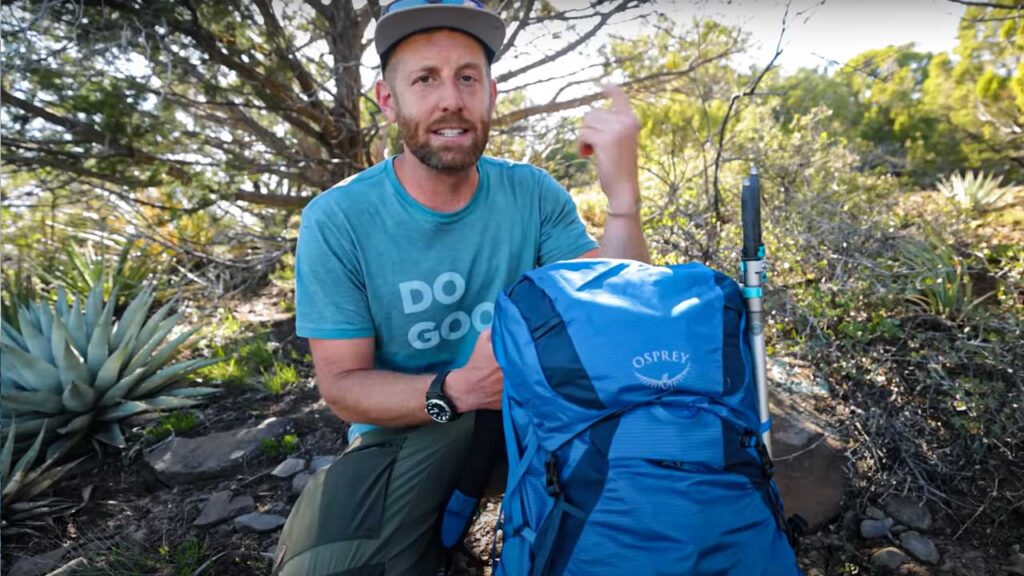
The Basic Specs for Osprey's Exos 48 Backpack:
Weight: 2.6 LB / 1.2 KG
Volume Capacity: 48 Liters
Retail Price: $240 (USD)
How Comfortable is the Osprey Exos 48?
The first thing that I noticed on the sun-soaked trails of backcountry Arizona was how good the airflow was. Osprey has always excelled in this category, and the Exos 48 is no exception. Especially if you're hustling out there as ultralight thru-hikers are known to do. Anything that can reduce the notorious back sweat is going to be a huge asset and improve comfort level significantly.
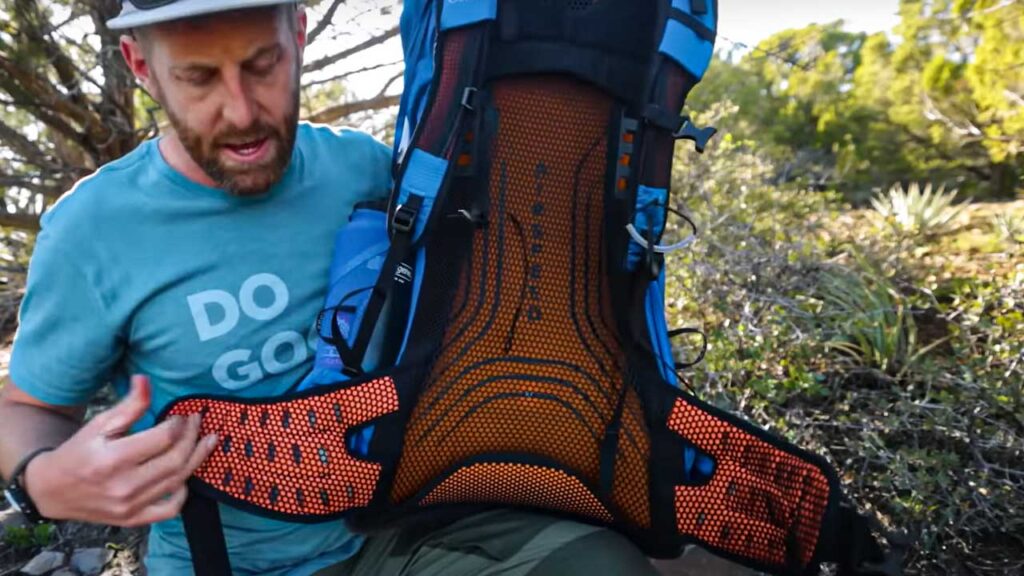
The shoulder straps and hip belt are other key areas of any backpack that translate into comfort (or discomfort). Relative to other Osprey packs that I've tried, I preferred the shoulder straps on the Exos 48.
The most important and reasonable comparison to make is in relation to other lightweight packs. Once you drop to the 2.5-pound threshold, backpacks tend to feature narrower, thinner straps. It's simply a necessary trade off in order to shed weight.
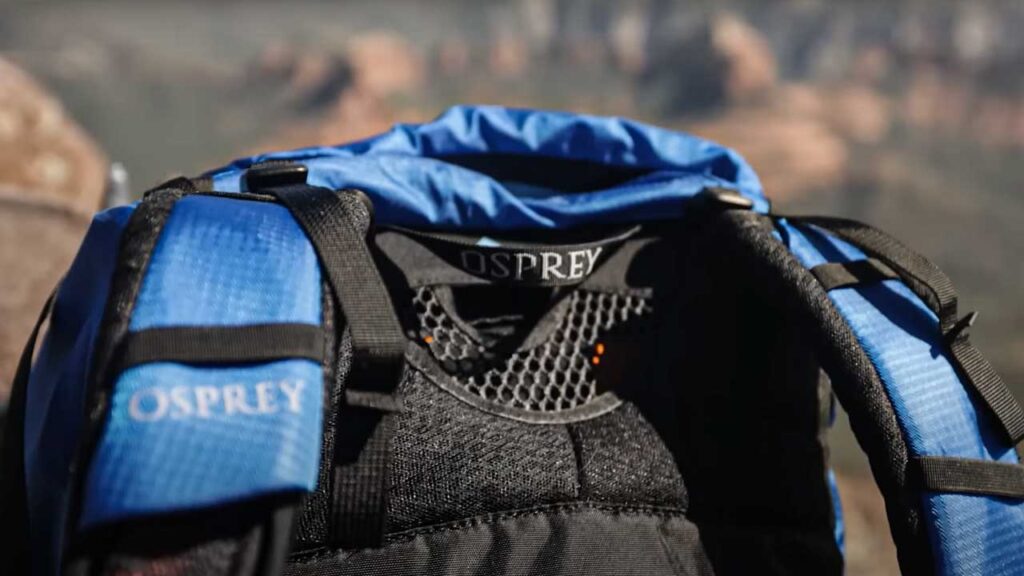
So with that in mind, Osprey's Exos 48 has more cushioning on the shoulders than you might think. The hip belt followed the same trend. Though not as fancy or padded as my standard trekking bags, my hips felt supported and free from any bruising or hot spots with the Exos 48.
Fitting the Osprey Exos 48
What's interesting about Osprey is that they deploy different yoke systems across their various lines of backpacks. A lot of brands stick with one method and simply tailor it to the style and size of each SKU. The solution they went with for the Exos 48 is very low-tech, but that also means it's easy to use and saves on weight (the ever-present goal in this genre of packs).
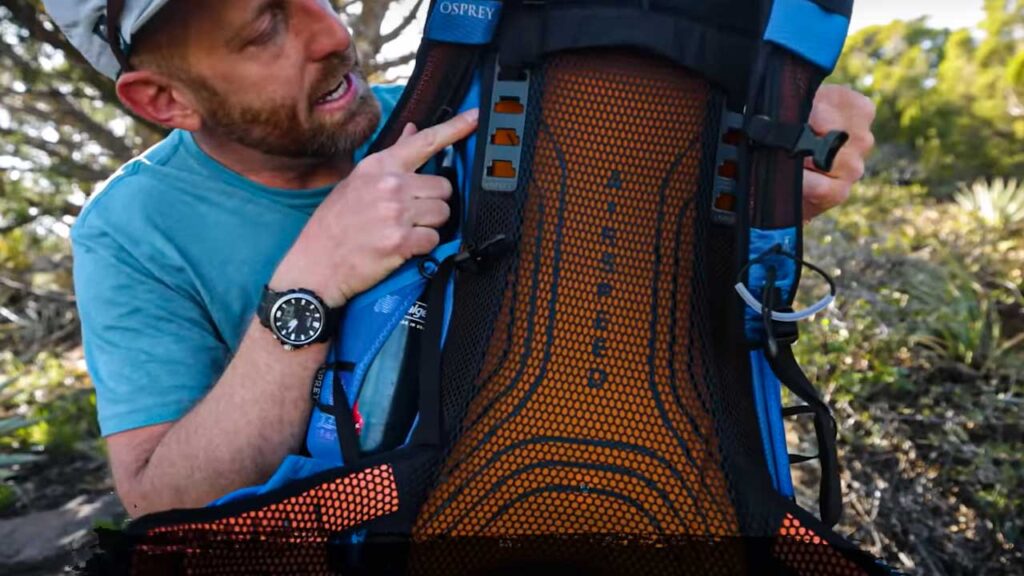
There are only a handful of increments for which to adjust the torso length, but if you buy the right size from the get-go, then you should be able to dial it right in.
The Design of the Osprey Exos 48
At 2.6 pounds, the design of the Exos 48 is understandably simple. The one way in (and out) of the backpack is to unbuckle the top loader and release the synched drawstring. There are no side access zippers, or even a separate compartment at the bottom for your sleeping bag.
As always, eliminating superfluous zippers, straps, and buckles are great ways to shave weight, and so in that sense, the design is a win for ultralighters. But with that said, in order to get the most out of this bag, you have to be very intentional about how you pack everything. It can be tough to find the right balance between stuffing your bulky/heavy items lower in the bag, while also being able to access things throughout the day without necessarily having to pull out half your stuff.
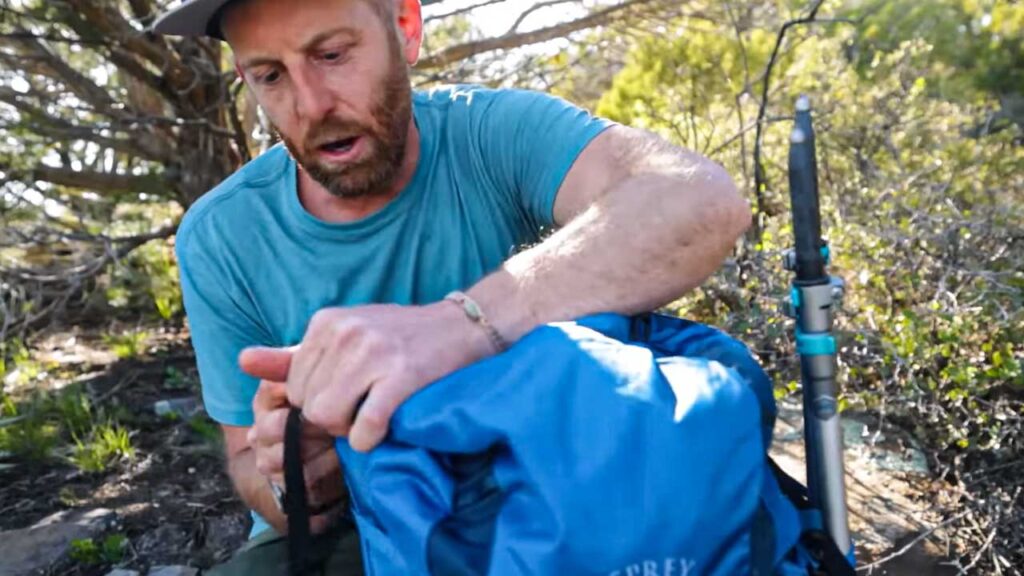
The Osprey Exos 48 Buckle Debockle
If you desire to streamline the Exos 48 backpack even further, you can actually detach the top loader. Although, not without some difficulty. For some reason you have to fish the straps out in an awkward way. I was left wishing that there was a simple buckle system, even though (I know) it would tip the scale slightly. With that said, sometimes it just takes a while to get familiarized with new gear, and detaching/reattaching this piece might become second-nature after a few attempts.
The exterior mesh pocket is a common feature amongst backpacks, and the Exos is well-served by also having one. It's a great place to stuff an extra layer, a map, a couple snacks, etc., and it creates just a bit of separation amongst your gear.
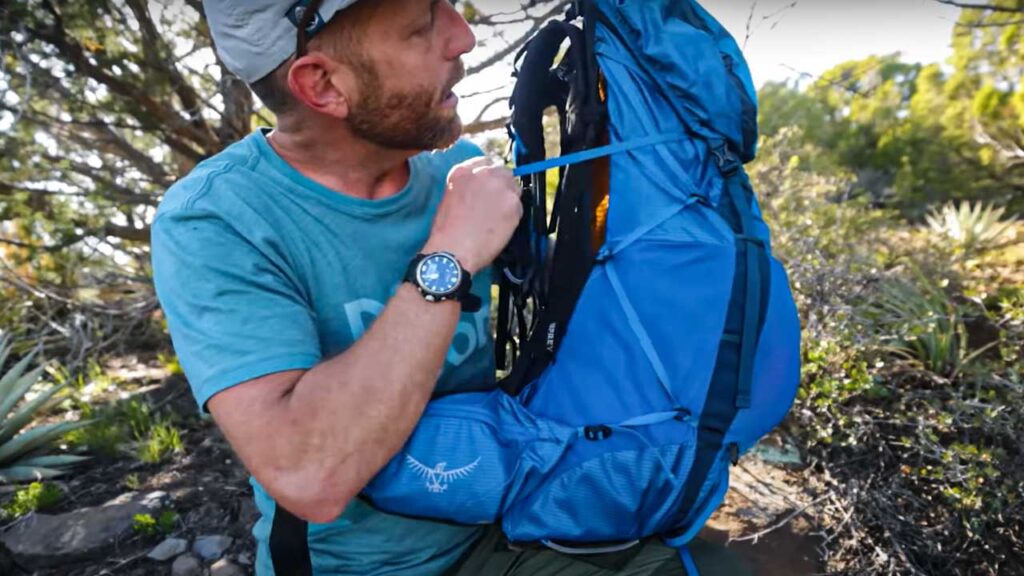
Side Storage Difficulties
The Osprey Exos 48L backpack also employs an interesting side compression mechanism. It's always nice to be able to condense the volume of a bag that isn't packed to the brim. The Exos has a zig-zagging strap on each side to accomplish this. It does work well, and looks pretty cool, but the main drawback is the lack of a quick-release clip.
I found that getting my trekking poles and tripod in and out of the side water bottle pocket became a bit annoying as the day wore on. Instead, I just left the poles in there (as well as my 1L Nalgene – it could fit both) and carried the tripod in my hand. In fairness, Osprey did provide separate grab n' go trekking pole storage loops. I have yet to find these particularly useful, but some people will get a lot of miles out of them.
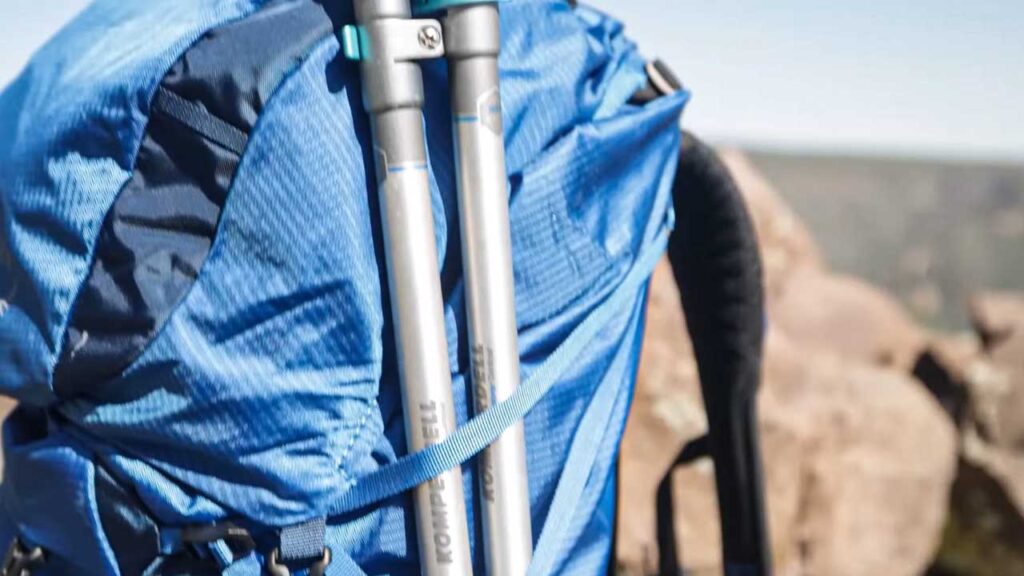
For all you climbers out there, or anyone in need of attaching external goodies, there are some extra gear loops and storage straps at the bottom of the bag. Not to beat a dead horse, but again, a couple of buckles would have gone a long way for practicality here. I'm just not a fan of fumbling with loose, naked straps.
A couple final features to note; the Exos 48 comes with two hip belt pockets, which are useful for stowing keys, snacks, chapstick, etc., and there is a hydration port, so your water bladder is always accessible.
Durability of Osprey Backpacks
I've only had a chance to hike a few times with the Exos 48, and so I can't speak to a lifetime of wear and tear, but what I can say about Osprey in general is that they really stand behind their craftsmanship.
One of the boldest and most popular protocols ever put into place is their “All Mighty Guarantee.” Regardless of when the pack (or any of their gear, for that matter) was purchased, Osprey offers free repairs on any damages or defects. If the problem can't be fixed, they will replace the item. Now that inspires confidence!
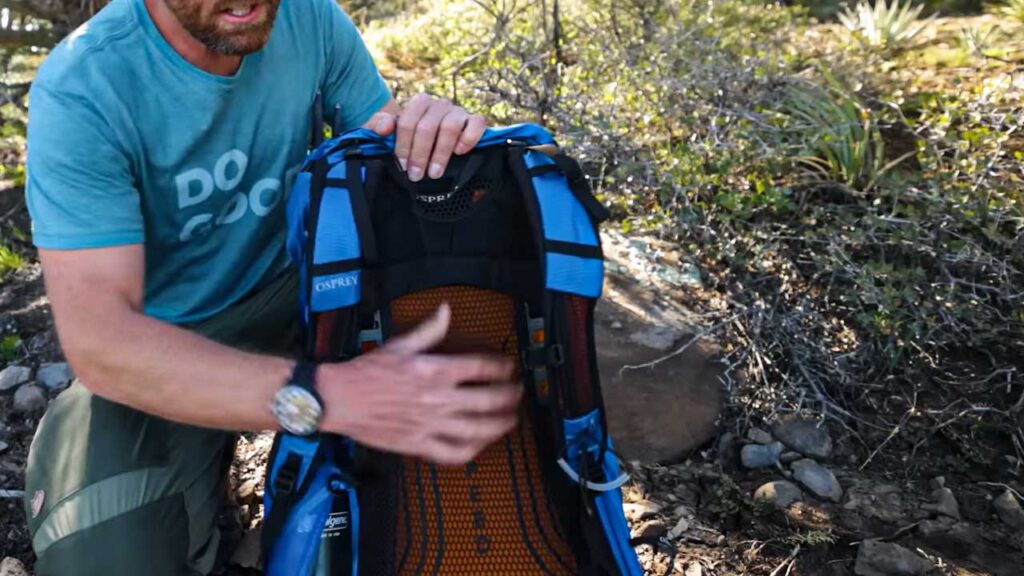
Osprey Exos 48
I know that this review is probably sounding rather mixed at the moment, but all of my dings have been in minor areas. It is also important to calibrate expectations when reaching for a lightweight backpack. If the goal is to cut out the bells and whistles in the name of swiftness, then obvious concessions have to be made. Overall, I was actually quite impressed with this backpack. It served me well on a long and hot desert hike.
I honestly feel like one of the best markets for the Exos would be newer hikers. Hikers who want something simple, functional, reasonably comfortable, and relatively inexpensive that will fuel a lot of fun adventures. If you like what this pack is bringing to the table but need more or less volume, there is also a 38 liter and 58 liter version available.
If you're in the market for a new backpack, then make sure to tune in regularly because I'm going to be doing a ton of reviews. In the meantime, check out the reviews of other popular backpacks. If you want to compare with other similar-size trekking bags, check out another backpack review, the Gossamer Gear Mariposa 60.



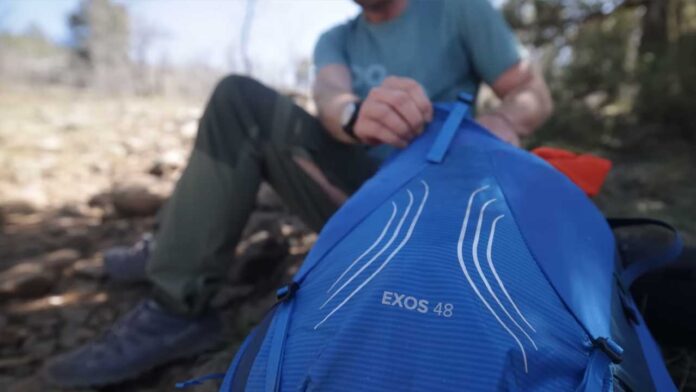


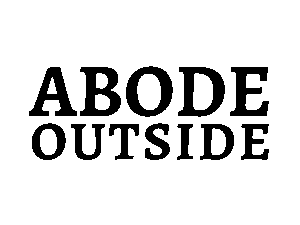


This is a great and detailed review of the Osprey Exos 48! I appreciate how you explained both the strengths and the small drawbacks of the pack. It’s good to know that it’s lightweight yet still comfortable for long hikes, thanks to the great ventilation and supportive hip belt. The tips on packing and the note about the compression straps are really helpful too. It sounds like a solid choice for anyone looking for a balance between weight and comfort on the trail. Thanks for sharing such an honest and informative review—perfect for hikers doing their research!